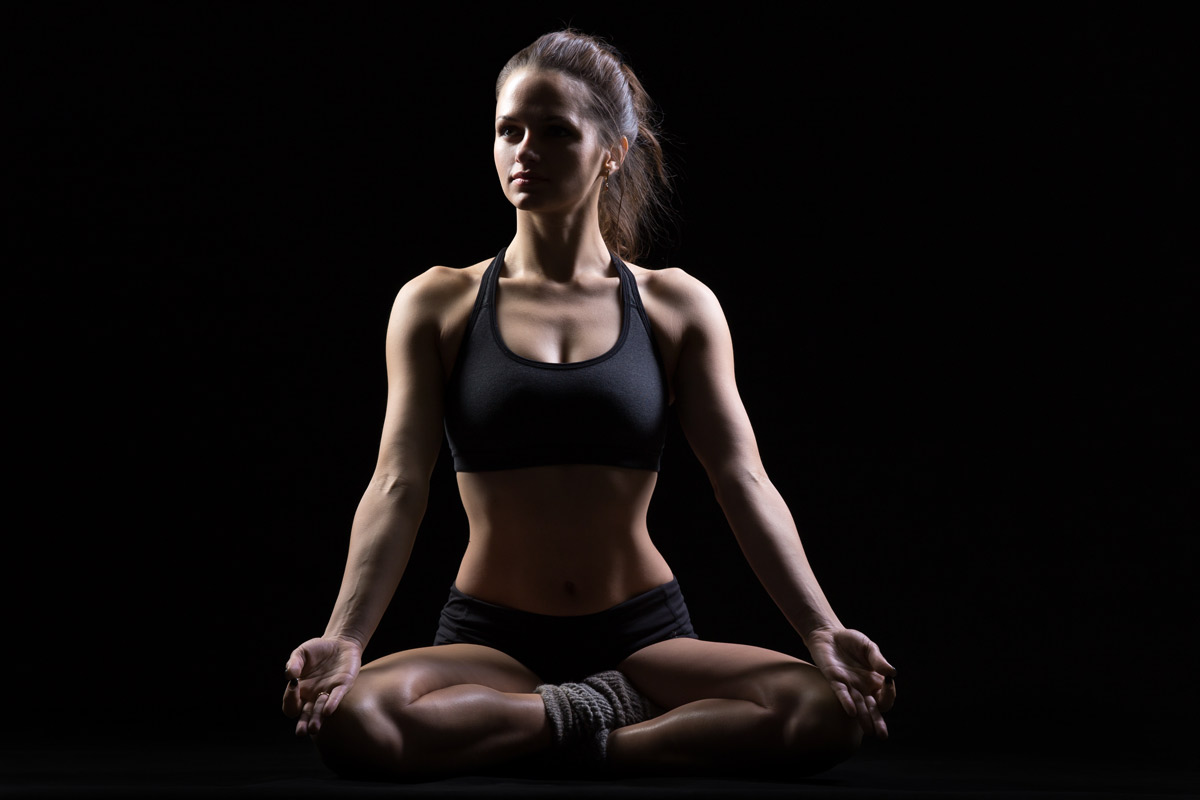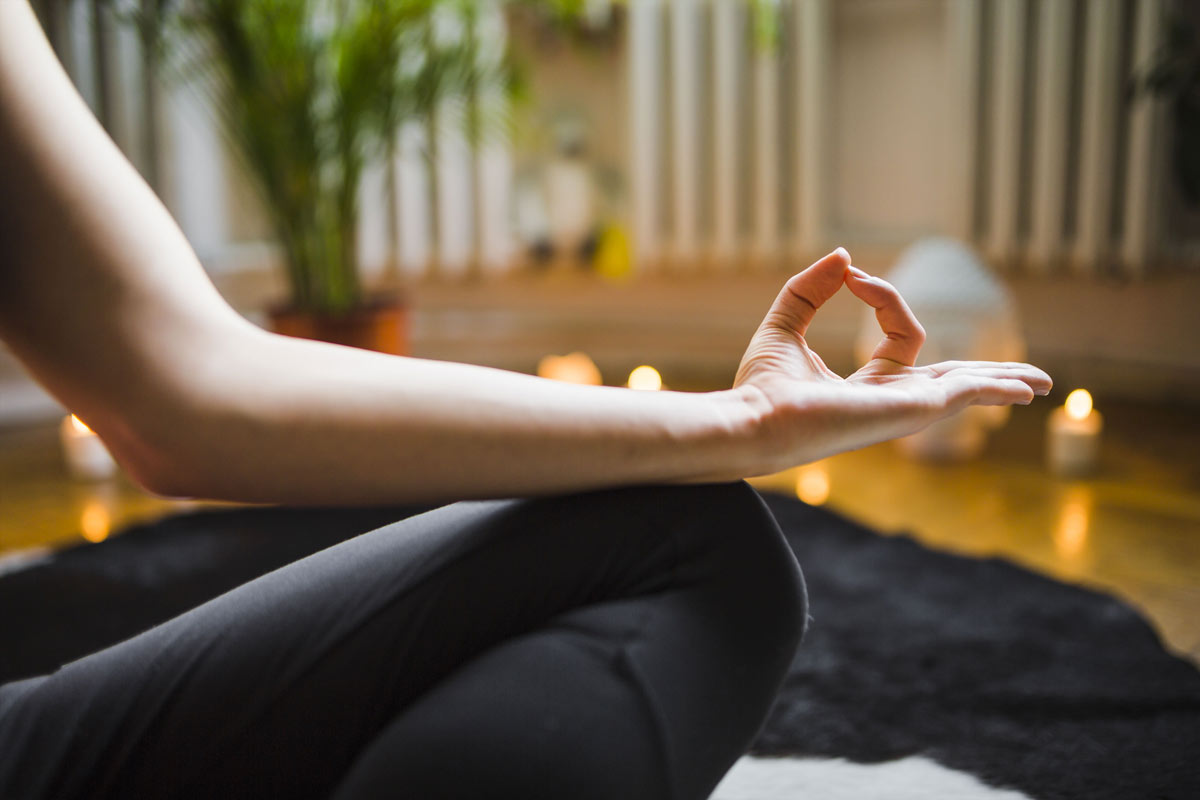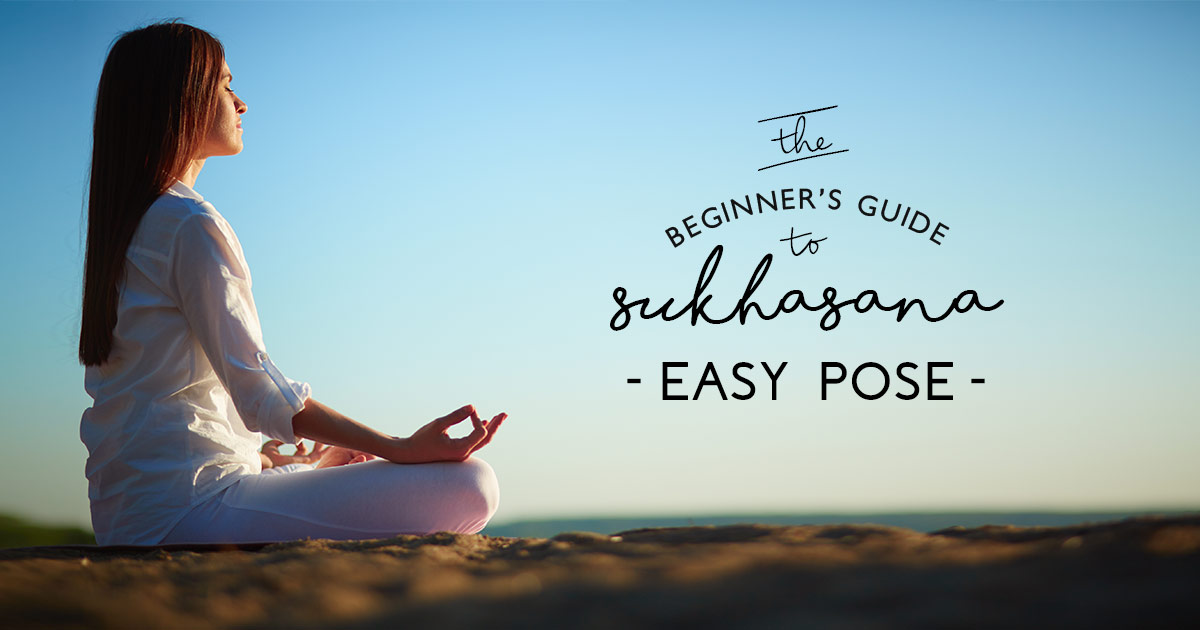Easy Pose – Sukhasana:
Easy pose (Sukhasana) is a simple cross-legged position, ideal for meditation practice.
How to guide:
To come into Sukhasana, start with the legs straight out in front of the body. Bend one leg (whichever feels most natural to do first), until you can place the foot underneath the other thigh. Now bend the other leg to the point that you can place the foot underneath the opposite thigh. Place the hands on the knees in either jnana mudra (the psychic gesture of knowledge) or chin mudra (psychic gesture of consciousness). See below for directions on both of these.
While in the Sukhasana posture, take care to keep the head facing straight ahead, the chin parallel to the floor. The shoulders should be relaxed and dropping away from the ears. Keep the neck and back straight, forming an upright line from the pelvis to the crown of the head. There should be no strain, but the lower abs should be activated as necessary to support the spine and pelvis. Do this by focussing into the stomach area and engaging the muscles gently, ensuring that the whole body is balanced in an even, neutral position, with the spine lifted and straight. Close the eyes. Relax the body.

To create jnana mudra, place the hands on the knees facing down. Fold the index fingers of each hand so that they touch the inside root of the thumb. Straighten the other three fingers of each hand so that they are relaxed and slightly apart. Relax the hands and ensure the arms are not being held straight. Chin mudra is achieved in the same way as jnana mudra, except that the back of both hands rest on the knees so that the palms face upwards.
Sukhasana is an excellent pose for meditation and these important psycho-neural finger locks make meditation asanas more powerful. Traditionally, jnana mudra is considered more outward-looking, while chin mudra is more introspective.
Who is it for?
For most people, this is a simple and relaxing pose, which can usually be held for extended periods. Ideally, you want the knees quite close to the ground or touching the ground. If the knees are high off the ground most of the body weight is being supported by the buttocks and back ache can develop. In that case, alternative meditation asanas, which create a larger and therefore steadier area of support may be preferred. Alternatively, try Suskhasana while sitting on a block or bolster, which, whilst maintaining a safe, neutral position in the pelvis, will enable gravity to encourage the knees towards the floor. Using multiple blocks to allow greater elevation from the floor will provide further relief for those with back pain. Another option would be to sit against a wall so that the spine is supported from top to bottom in the upright position.
For a gentler modification, Sukhasana may be performed sitting cross-legged with a belt wrapped around the knees and lower back. Keep the spine upright. Concentrate on the physical balance and on equalising the right and left sides of the body.

Benefits:
- Easiest and most comfortable of the meditation postures
- Can be performed without ill effect by people who are unable to sit in the more difficult meditation postures
- It facilitates mental and physical balance without causing strain or pain
- By incorporating a mudra (gesture) into the posture, the meditation practice is deepened
Style:
Classical meditation asana; practiced in most traditional schools of yoga.
Variations:
Easy pose is so named because of the straightforward and simple nature of this posture. For a slightly more complex seated meditation asana, consider Lotus (Padmasana) or Half-Lotus (Ardha Padmasana).
Difficulty:
Accessible for most people
Reasons to Avoid
Experiencing back pain as a result of body weight resting too intensively in the buttocks.

Leave A Comment